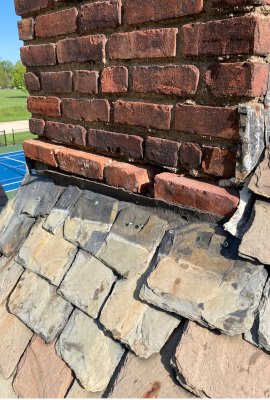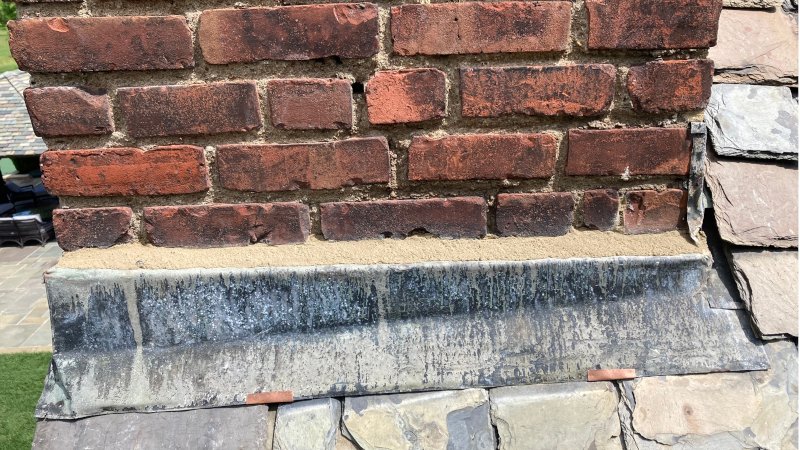Waite Hill, Ohio | Historic Slate and Copper Roof and Gutter Repair
Restoration and repair of a unique slate roof and ornamental lead gutters on a historic estate in Waite Hill, Ohio.
We were called to repair several sagging lead gutters, as well as loose, damaged, and missing roofing flashings, and bent or broken downspouts and downspout wall brackets. Broken and missing slate roof shingles, made of high-quality Vermont weathering green slate, were replaced with matching slate shingles.
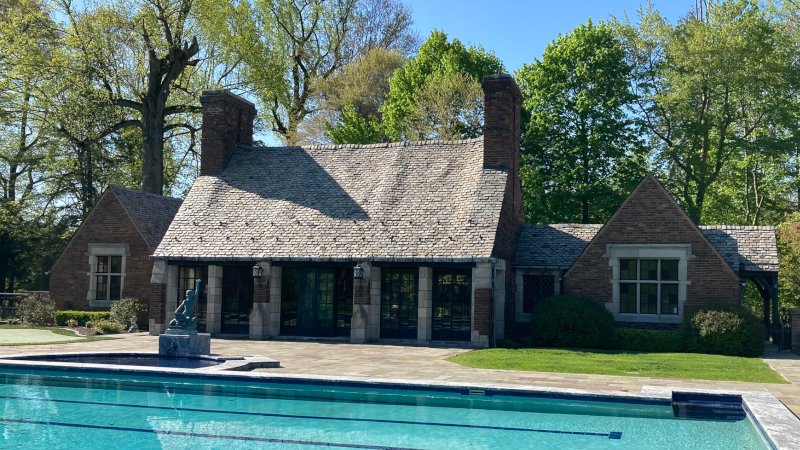
The sagging section of the gutter has been affected by decades of snow and ice accumulation. The brackets are loose and are separating from the brick wall. Additionally, the wall flashing beneath the gutter, made of lead-coated copper sheet metal, has come loose due to the deterioration of the brick mortar joints.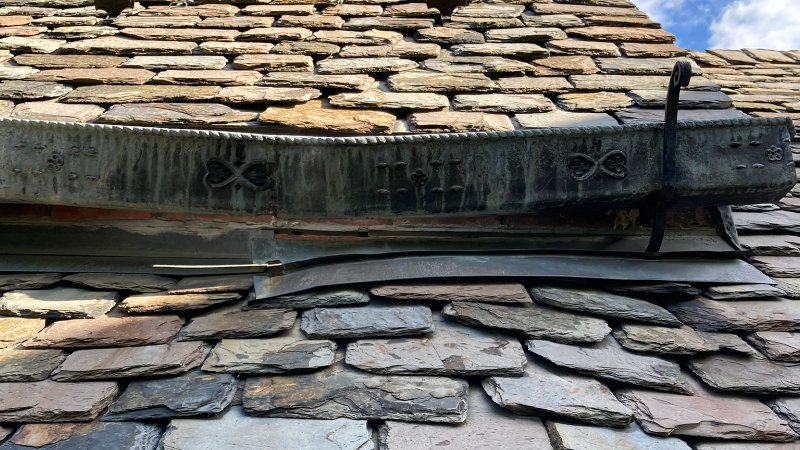
We removed the sagging section of the gutter, along with the gutter brackets and wall flashing. The wall’s mortar joint was cut, and any loose mortar was removed. New anchors were installed in the repointed mortar joints, and the gutter brackets were then reset into these new anchors. The existing wall flashing was repaired and reinstalled using lead fasteners. Finally, the gutter was straightened, reset, and resoldered at the joint.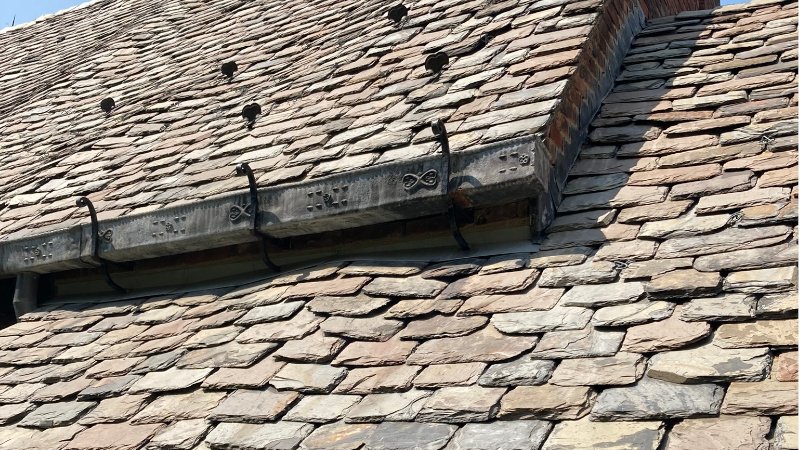
Many of the downspouts were disconnected from the gutter outlets, and several wall brackets for the downspouts were either severely bent or broken. This issue was caused by a combination of the weight of the downspouts, deterioration of the anchors in the masonry wall, and lack of proper maintenance.
We straightened the downspout brackets and soldered the broken brackets back together where necessary. We also re-mortared and set new wall anchors, added new base pipe supports for the downspouts, and reattached them to the gutters.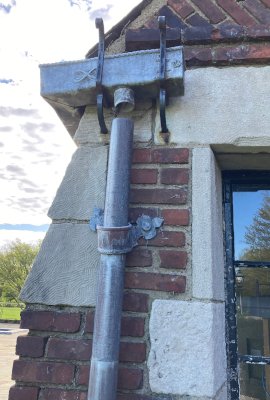
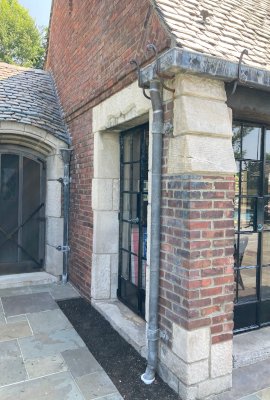
Copper Roof Flashings: Some of the roof flashings, made from lead-coated copper sheet metal, were either missing or loose. We were able to locate and reinstall some of the missing pieces. The wall mortar joints were re-cut and cleared of loose and deteriorating mortar. Copper cleats and lead fasteners were installed to secure the flashings where necessary. New mortar, compatible in hardness and composition with the existing mortar, was applied to seal both the flashings and the mortar joints.